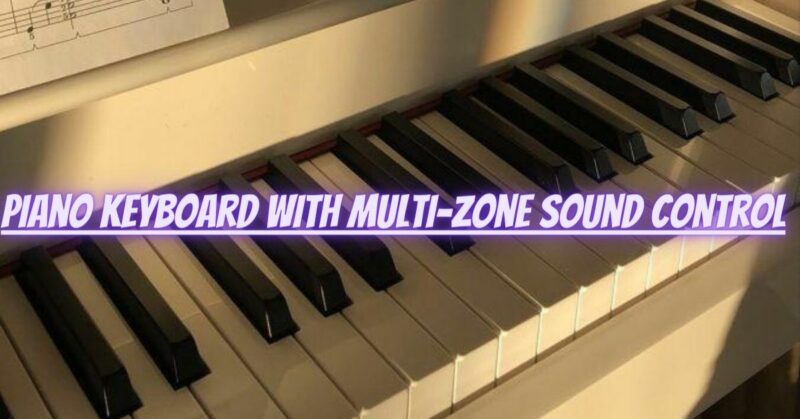In the ever-evolving world of music technology, piano keyboards with multi-zone sound control stand at the forefront of innovation, providing musicians with a new level of creativity and expression. This cutting-edge feature allows pianists to divide the keyboard into multiple zones, each with its unique sound, enabling seamless integration of different instruments and tones within a single performance. In this article, we’ll explore the significance and benefits of a piano keyboard with multi-zone sound control, and how it becomes the ultimate tool to unlock boundless creativity and expression in the realm of music.
1. Enhanced Performance Capabilities:
With multi-zone sound control, pianists can divide the keyboard into separate zones, each assigned to a different instrument or sound. This feature enables them to switch effortlessly between piano, strings, synths, and other instruments during a single performance, expanding their sonic palette and enhancing their expressive capabilities.
2. Layering and Crossfading Sounds:
The ability to layer and crossfade sounds within different zones enhances the richness and complexity of a pianist’s performance. By blending different instrument sounds, they can create captivating textures and dynamic arrangements, elevating their music to new heights.
3. Seamless Transitions and Modulations:
Multi-zone sound control facilitates seamless transitions and modulations between different sounds. Pianists can smoothly move from one instrument to another or gradually change the sound characteristics within a zone, resulting in fluid and organic musical progressions.
4. Customization and Personalization:
The feature of multi-zone sound control allows for customization and personalization of the keyboard’s performance. Pianists can tailor the zones to suit their musical preferences and adapt the instrument to specific genres or compositions, adding a touch of uniqueness to their performances.
5. Composing and Arranging Flexibility:
For composers and arrangers, multi-zone sound control becomes a powerful tool for exploring musical ideas. It enables them to experiment with various instrument combinations, harmonies, and orchestration, streamlining the creative process and bringing their compositions to life with precision.
6. Live Performance Artistry:
In live performances, multi-zone sound control becomes an instrument of artistry. Pianists can use it to create stunning soundscapes, change the mood of a piece instantly, and captivate audiences with mesmerizing performances that showcase their virtuosity and musical vision.
7. Integration with DAWs and MIDI:
The integration of multi-zone sound control with digital audio workstations (DAWs) and MIDI interfaces further enhances a pianist’s creative potential. It allows for advanced MIDI mapping and control, offering endless possibilities for sound manipulation and production.
8. Expanding Musical Boundaries:
Ultimately, a piano keyboard with multi-zone sound control expands the boundaries of what’s possible in music. It empowers pianists to combine traditional piano sounds with modern electronic elements, bridging the gap between classical and contemporary music and pushing the envelope of musical innovation.
Conclusion:
A piano keyboard with multi-zone sound control becomes the epitome of innovation and expression, unlocking boundless creativity for musicians. Whether performing on stage, composing in the studio, or exploring new musical territories, this feature empowers pianists to create breathtaking performances, rich in texture, and mesmerizing in scope. Embrace the power of multi-zone sound control, and watch as your musical journey flourishes with newfound depth, versatility, and artistry. With the right piano keyboard at your fingertips, you have the means to break free from conventional limitations, and embark on a transformative musical voyage that transcends boundaries, captivates audiences, and leaves a lasting impression on the world of music.


